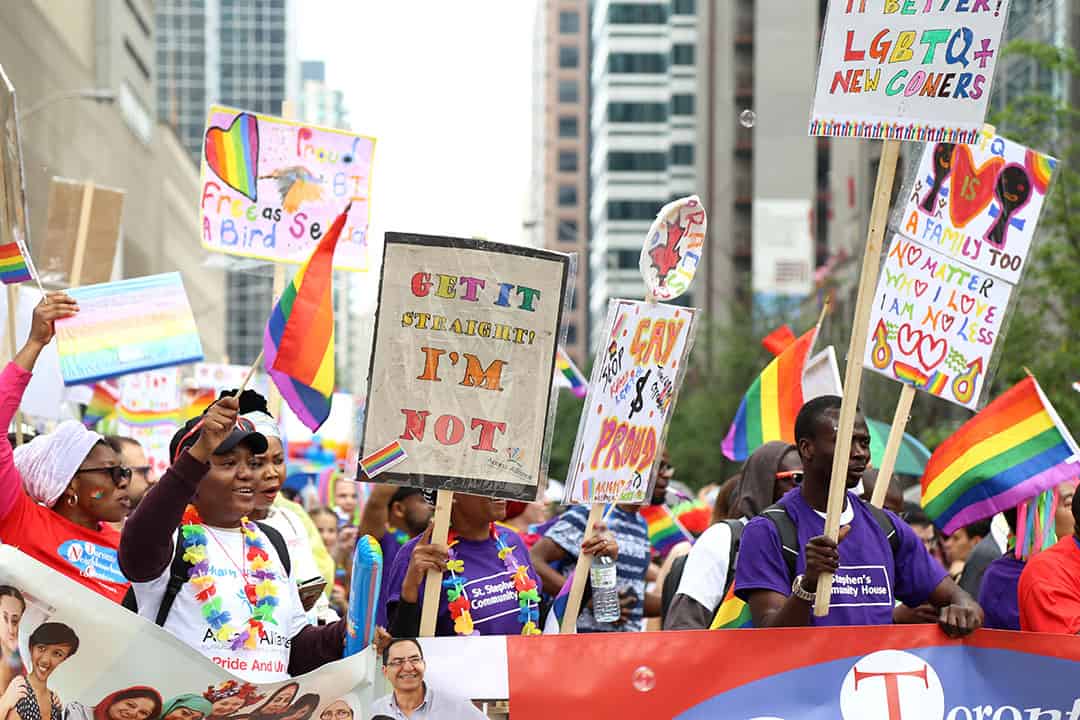There are few places where one can strip themselves of any veil and express the unadulterated version of themself. Throughout the years, Pride has become one of these safe havens.
Pride highlights the LGBTQ+ community in all of its glory. The carnivalesque themes and harlequin atmosphere project and celebrate the years spent hiding from oppression and fighting for basic rights — the right to love, to express, and to simply be.
LGBTQ+ individuals fight, whether in public or private, to be a part of the fabric that creates and connects societies worldwide. Pride allows members of the LGBTQ+ community to defend their feelings, protect their right to resist social stigma, and promote the rich diversity that defines the community.
There is a fearlessness to Pride, backed by a history infused with tenacity and courage, that leaves me in awe. June 16, 2017 was the first time I attended the Pride parade. People of every age, shape, and ethnicity filled the streets. The crowd was as polychromatic as the flags that they carried, and the atmosphere was filled with glitter and charged with ecstasy.
Amidst the bombastic music and vivid rainbows, all I saw was the unreserved emotion — the wide smiles that make eyes gleam, and the tears running down faces, filled with nostalgia and joy. Coming from a country like Pakistan, where many aspects of society are censored, I had never had the privilege of experiencing something like this before.
I have always been a supporter of the LGBTQ+ community, possibly even before I understood how sexuality and gender are constructed in our world, but in those moments at Pride, a newfound appreciation for the movement grew in me.
The spectacle of ‘come as you are’ is terrifying for most people, myself included. We fall into a façade that we feel will be accepted, rather than letting the world adjust to accommodate, or simply accept, us.
Although I have experienced discrimination as a Muslim woman of colour, I also identify as cisgender. I cannot claim to completely understand the struggle of being constantly mislabeled by heteronormative culture, as I have never had to justify who I’m attracted to or the identity that I adopt.
But as I marched alongside all the supporters who had come out to celebrate Pride, I realized that this community has every right to be heard. A flicker of hope sparked in my heart that one day people in my country could do the same.
Freedom of expression is a relative term in Pakistan, but so are all the other freedoms that we take for granted in the West. Pakistan is a country submerged in years of turmoil and deluded by biased religiosity. There is a lack of free will, despite citizens being charming and humble. Even social activists are often afraid to advocate for the inclusivity of various sexualities, genders, and identities.
The monochromatic city walls retain the stories of people who are desperate, but afraid, to be themselves without discrimination. I have seen my friends struggle because we come from a society laced with conservatism, which leaves them unable to live their truths.
Narrow-mindedness bred through education paves a predetermined path for every generation, before its members even realize who they are or who they love. People have to think twice before touching, and the simple act of interlocking fingers turns into hushed shadows. They begin to live in the darkness — secretly existing, but never really seen. Where I am from, this is all too often the narrative of the LGBTQ+ community.
Standing at Pride, I wanted more for my country. I wanted ruffled feathers, ostentatious costumes, hopeful slogans, and liberation. It was all right in front of me — people reveling in the light as they walked through the streets of Toronto.
For me, that felt like the importance of Pride. It is not just a celebration, but a remembrance of the journey that led to these moments and the road moving forward. That is, a road for further inclusivity that dispels the latent bigotry and gives rise to equity.
While the West has made strides, there is still a vast amount of LGBTQ+ culture that needs to be taught and mainstreamed. It goes beyond a day or a month — paradigms need to be shifted worldwide.
The LGBTQ+ community has always faced adversity with love and resilience, from Stonewall to the fight for transgender rights. Members and supporters of the LGBTQ+ community keep marching to retain the rights given to them, with the hope that we can spark change in a countries where these rights do not yet exist.
This year, Pride encompassed not only the vibrant festivities, but also highlighted the violence that has recently struck the community. Pride serves as a reminder that regardless of how far we have come, there is still so much that needs to be done.
Rather than touting what I have done for the LGBTQ+ community — which is little in comparison to what the community has taught me — this is my love letter to Pride.


